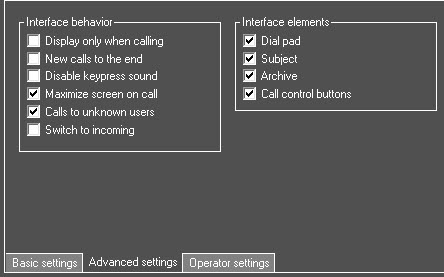
Go to documentation repository
Documentation for Monitoring PSIM 1.0 (english)
Previous page Next page
General information
Audio calls are supported between operators in a distributed configuration on the Server Of Control/Agent Of Control side. Audio calls are made using the SIP-terminal object. Physical SIP devices are not required.
Configuring audio calls from the Monitoring interface
Configure audio calls from the Monitoring interface as follows:
- At the Server Of Control and Agent Of Control side:
- Create the Audio card object with the Microphone child object (see Audio subsystem configuration).
- Create the Audio playback card object with the Speaker child object (see Configuring audio playback).
- At the Server Of Control side:
- Create the SIP-terminal object as a SIP-server in Axxon PSIM (see Configuring SIP-terminal).
- On the basis of the SIP-terminal object, create two SIP-operator child objects and for each of them specify the corresponding operator identification number (Configuring SIP-operators on the SIP server of Axxon PSIM).
- On the basis of the SIP-terminal object, create the Address book object and select the previously created SIP-operators (see Configuring address book of SIP-terminal).
- On the settings panel of each SIP-operator, select a previously created address book (see Configuring SIP-operators on the SIP server of Axxon PSIM).
Create the SIP-panel 1 interface object on the same Display 1 object on which the Monitoring interface object was created (see Configuring the SIP-panel interface object).
Note
Recommended coordinates of the SIP-panel: X = 40, Y = 40, W = 20, H = 21.- On the Basic settings tab of the SIP-panel 1 object, select the SIP-terminal as the terminal (see Basic settings of the SIP-panel interface object).
- On the Advanced settings tab of the SIP-panel 1 object, set the checkboxes as shown in the figure below (see Advanced settings of the SIP-panel interface object).
- On the Operator settings tab of the SIP-panel 1 object, configure the list of SIP-operators as shown in the figure below (see Operator settings of the SIP-panel interface object).
- Create the Display 2 object, which will be displayed only on the Agent Of Control side (see Assigning the displays to the operator workstations).
- Create the SIP-panel 2 child interface object.
- On the Basic settings tab of the SIP-panel 2 object, select the SIP-terminal as the terminal (see Basic settings of the SIP-panel interface object).
- On the Advanced settings tab of the SIP-panel 2 object, set the checkboxes as shown in the figure below (see Advanced settings of the SIP-panel interface object).
- On the Operator settings tab of the SIP-panel 2 object, configure the list of SIP-operators as shown in the figure below (see Operator settings of the SIP-panel interface object).
- On the settings panel of the Computer object, select the speaker and microphone of the SIP-operator (see Selecting speaker, microphone and camera for SIP-operator).
Configuring audio calls from the Monitoring interface is now complete.
As a result, the Audio call item will appear in the context menu of the object in the Monitoring interface. When you select this menu item, an audio call will be made to the operator who is on the computer with the corresponding object.




